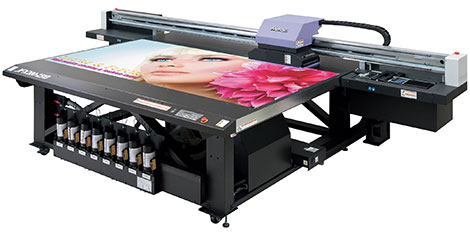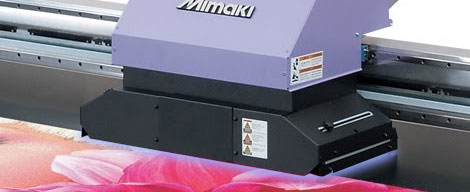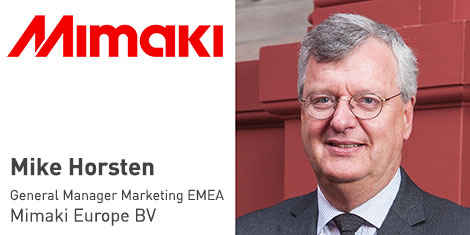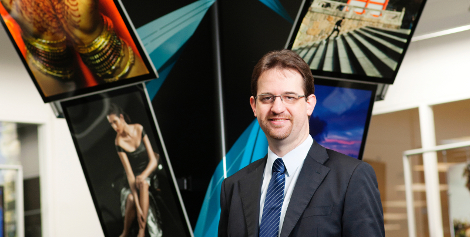
In the first of our regular monthly Guest Blogs penned by an AGFA digital inkjet print Guru, Tom Cloots, (Director/Marketing Industrial Inks) talks industrial printing, and the InPrint exhibition.
InPrint (you sure this isn’t a typo?)…
Last week a friend called (he works for a printing company) to tell me we had misspelled the word in one of our press releases. “It has to be spelled imprint,” he said, obviously referring to one of the digital marking technologies that many printing companies began to use in the mid 90s to extend their range of services.
I took some time to explain him we made no mistake and that imprinting is in fact just one of the applications for depositing ink on a variety of substrates other than plain paper, as commonly done in the world of inprint – short for industrial printing.
Printing, as we have known it for years, was invented by Gutenberg as a process of mass communication between one sender and many receivers – his bible being one of the greatest bestsellers ever. Despite competition from digital media, today’s printing industry still stands as an important source of information delivery.
In parallel, however, printing technology has also been used for other purposes than communication, thus printing modules where incorporated in the manufacturing process of various industrial end products with the purpose of adding functionality or embellishment. This is the realm of industrial printing.
The printing systems for industrial applications are no longer single-source products like the ones used in the traditional printing industry but systems that are custom-engineered by OEM’s and system integrators. Today’s predominant technologies are screen printing, flexography and gravure but digital printing technologies are gaining importance, the strongest growth being projected for inkjet, and in particular UV inkjet.
Industrial printing systems, whether hybrid solutions or entirely based on UV inkjet, are made up of several critical components, each of them originating from the R&D of separate companies, and they target specific applications. Since you can design systems that can print on a variety of surfaces, that number of applications is virtually endless… Provided you can make the ink stick.
This is why industrial printing ink, and in particular UV inkjet is never a commodity product but one of the critical components of every industrial printing system. This is where we, from Agfa Graphics, put our experience on the line to support OEM’s and industrial printing system integrators.
The Agfa Graphics inks come in a variety of different formulations, researched and developed for specific market sectors and printing systems, and related to printhead, curing systems and application related specifications. Each product is designed for optimum productivity without compromise, with particular emphasis on offering the best substrate compatibility, jetting performance and reliability, along with cost- effective consumption and very high quality results.
Since not all OEM’s and system integrators possess the know how and experience of printing, Agfa Graphics can also provide expert advice on important matters such as the relation between the printhead wave form and the ink formulation, workflow and color management issues and printhead cleaning solutions. A long list of clients confirms our reputation in this market, as illustrated by a testimonial of John Corrall, Managing Director of Industrial Inkjet Ltd:
“Agfa Graphics’ inks are now the default choice in our range of single-pass color inkjet systems. More often than not our print sample lab reports that Agfa Graphics inks give the best print quality and adhesion on the customer’s substrate. In addition, there is the excellent technical response when we need help. But the key point for us is reliability. Our service team knows from experience that Agfa Graphics’ inks have superb reliability. Maintenance time for the customer is negligible. More than anything else this makes us reluctant to use other inks.”
Our booth at the InPrint exhibition will be the meeting place-to-be for OEM’s, system integrators and Agfa Graphics’ experts. We hope to welcome you there.
Want to Blog for LFR? We have an educated audience of print professionals who are looking for pertinent and relevant information to assist them in their own decision making and business development processes - talk to them, and join the likes of HP, Mimaki, Nazdar and of course now AGFA, who all regularly Blog informative content for our readers.








